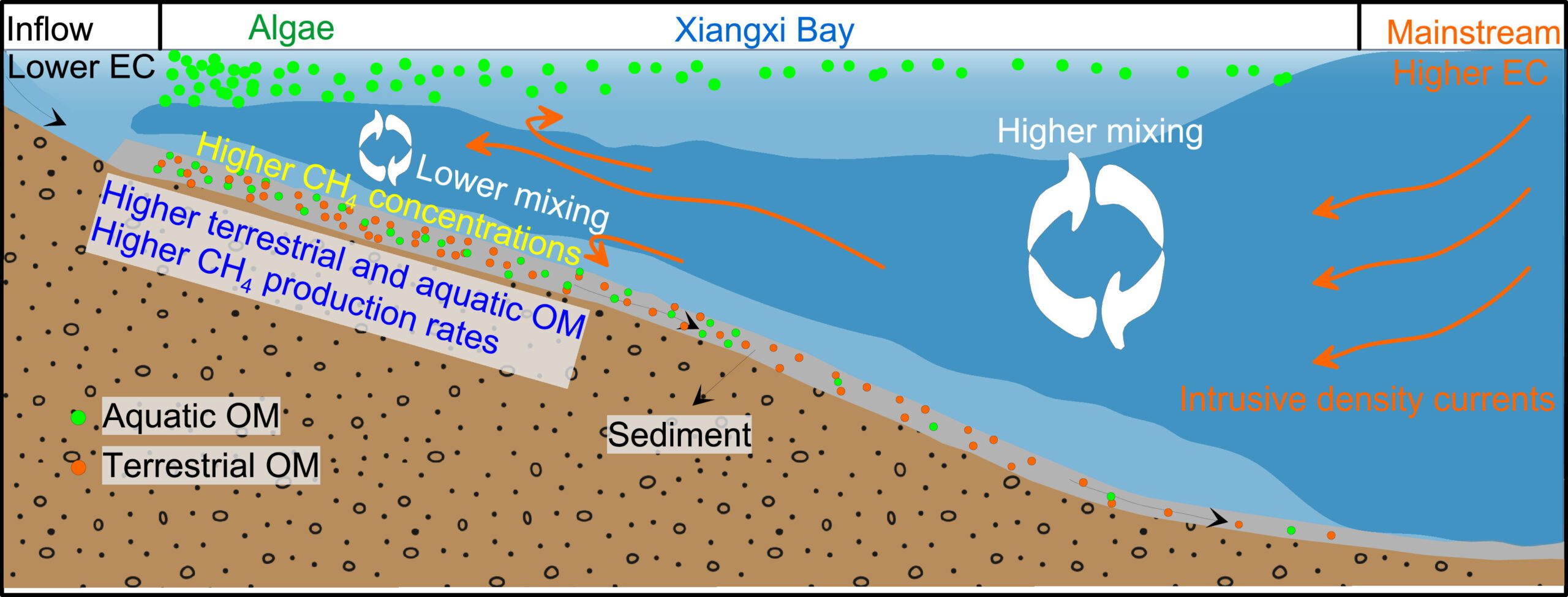Our new paper, “Methane dynamics
altered by reservoir operations in a typical tributary of the Three Gorges Reservoir“, is published in Water Research (IF: 11.4).
The paper and its supplement can be downloaded at https://www.sciencedirect.com/science/article/pii/S0043135424010625.
Authors: Jia Liu, Fei Xue, Xiaojuan Guo, Zhengjian Yang, Manchun Kang, Min Chen, Daobin Ji, Defu Liu, Shangbin Xiao, and Chenghao Wang
Abstract: Substantial nutrient inputs from reservoir impoundment typically increase sedimentation rate and primary production. This can greatly enhance methane (CH4) production, making reservoirs potentially significant sources of atmospheric CH4. Consequently, elucidating CH4 emissions from reservoirs is crucial for assessing their role in the global methane budget. Reservoir operations can also influence hydrodynamic and biogeochemical processes, potentially leading to pronounced spatiotemporal heterogeneity, especially in reservoirs with complex tributaries, such as the Three Gorges Reservoir (TGR). Although several studies have investigated the spatial and temporal variations in CH4 emissions in the TGR and its tributaries, considerable uncertainties remain regarding the impact of reservoir operations on CH4 dynamics. These uncertainties primarily arise from the limited spatial and temporal resolutions of previous measurements and the complex underlying mechanisms of CH4 dynamics in reservoirs. In this study, we employed a fast-response automated gas equilibrator to measure the spatial distribution and seasonal variations of dissolved CH4 concentrations in XXB, a representative area significantly impacted by TGR operations and known for severe algal blooms. Additionally, we measured CH4 production rates in sediments and diffusive CH4 flux in the surface water. Our multiple campaigns suggest substantial spatial and temporal variability in CH4 concentrations across XXB. Specifically, dissolved CH4 concentrations were generally higher upstream than downstream and exhibited a vertical stratification, with greater concentrations in bottom water compared to surface water. The peak dissolved CH4 concentration was observed in May during the drained period. Our results suggest that the interplay between aquatic organic matter, which promotes CH4 production, and the dilution process caused by intrusion flows from the mainstream primarily drives this spatiotemporal variability. Importantly, our study indicates the feasibility of using strategic reservoir operations to regulate these factors and mitigate CH4 emissions. This eco-environmental approach could also be a pivotal management strategy to reduce greenhouse gas emissions from other reservoirs.
DOI: https://doi.org/10.1016/j.watres.2024.122163

